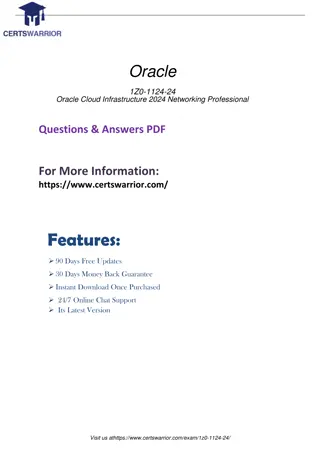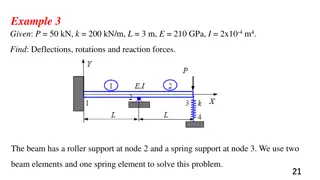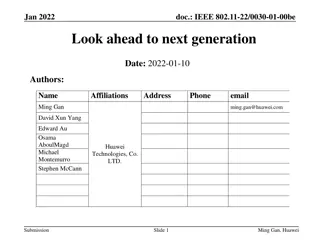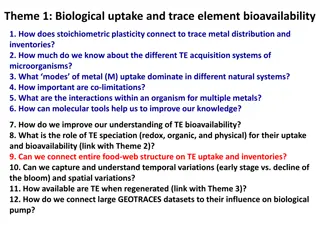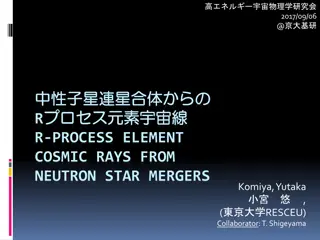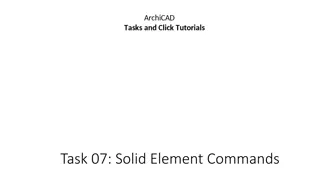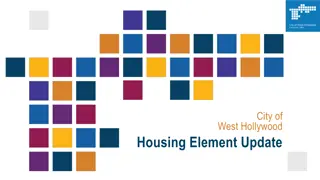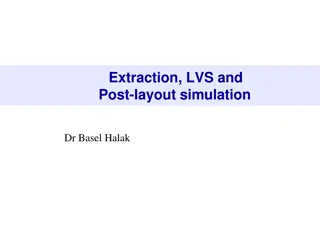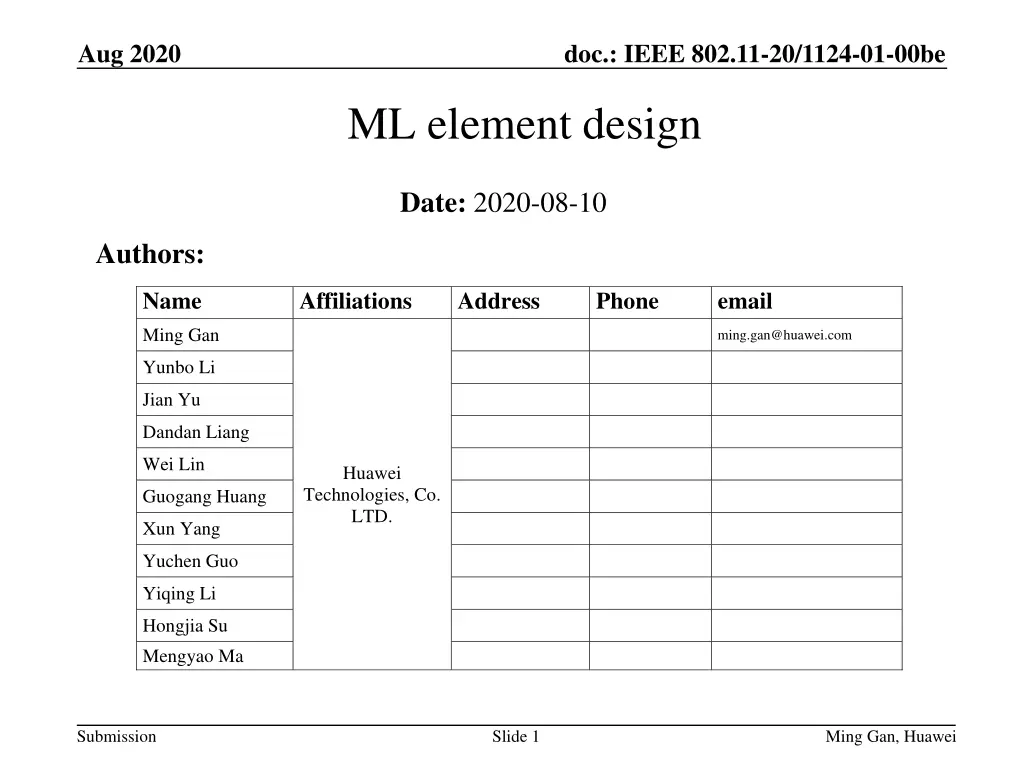
IEEE 802.11-20/1124-01-00be ML Element Design Overview
Explore the IEEE 802.11-20/1124-01-00be standard focusing on ML element design in the context of STA and MLD interactions during discovery and setup phases. Discover how APs and STAs exchange MLD-related information to enhance network performance and efficiency.
Download Presentation

Please find below an Image/Link to download the presentation.
The content on the website is provided AS IS for your information and personal use only. It may not be sold, licensed, or shared on other websites without obtaining consent from the author. If you encounter any issues during the download, it is possible that the publisher has removed the file from their server.
You are allowed to download the files provided on this website for personal or commercial use, subject to the condition that they are used lawfully. All files are the property of their respective owners.
The content on the website is provided AS IS for your information and personal use only. It may not be sold, licensed, or shared on other websites without obtaining consent from the author.
E N D
Presentation Transcript
Aug 2020 doc.: IEEE 802.11-20/1124-01-00be ML element design Date: 2020-08-10 Authors: Name Affiliations Address Phone email Ming Gan ming.gan@huawei.com Yunbo Li Jian Yu Dandan Liang Wei Lin Huawei Technologies, Co. LTD. Guogang Huang Xun Yang Yuchen Guo Yiqing Li Hongjia Su Mengyao Ma Submission Slide 1 Ming Gan, Huawei
Aug 2020 doc.: IEEE 802.11-20/1124-01-00be Background 802.11be defines mechanism(s) to include ML element that a STA of an MLD provides in its mgmt. frames, during discovery and ML setup, as described below[1]: MLD Level/Common Info Information common to all the STAs of the MLD. Per-link information Capabilities and Operational parameter of other STAs of the MLD other than the advertising STA. Multiple Link element Element ID Element ID Extension Common Control Length MLD Address Optional Sub-elements Octets: 1 1 1 1 0 or 6 variable Per-Link Info MLD Level/Common Info MLD Addr Present Submission Slide 2 Ming Gan, Huawei
Aug 2020 doc.: IEEE 802.11-20/1124-01-00be Recap During the discovery phase, an AP within an AP MLD should only include the MLD-level/common info field of the ML element in the Beacon or non-ML Probe Response frame The MLD-level/common info includes MLD MAC address and other TBD info During the multi-link set up phase, a STA in a MLD can provide a complete ML element MLD-level information that is common to all STAs in the same MLD and per-link information that is specific to the STA on each link in management frames Moreover, an AP in an AP MLD can provide a complete or partial ML element in the ML Probe Response frame as per the ML Probe Request frame An AP receives the ML Probe Request frame which solicits the info of specific AP within the target AP MLD An AP receives the ML Probe Request frame which solicits the info of the specific AP MLD Slide 3 Submission Ming Gan, Huawei
May 2020 doc.: IEEE 802.11-20/1124-01-00be ML element in discovery phase To speed up the AP MLD discovery phase, an AP in an AP MLD shall advertise the ML related info for each AP in the same AP MLD and other collocated AP MLD, such as Link ID, ML ID and so on in [2] [3] and[4] Link ID is carried in TBTT info of the RNR element for a reported AP, which is used to identify this AP ML ID is also carried in the TBTT info of the RNR element for a reported AP , which is used to identify the AP MLD with which this AP is affiliated However, the ML related info for both transmitting AP and nontransmitted BSSID is missing as mentioned in [2] RNR element does not contain the info for both transmitting AP and nontransmitted BSSID (exception case is not consider here) Moreover, the locations of Change Sequence field for both transmitting AP and nontransmitted BSSID are also TBD now Submission Slide 4 Ming Gan, Huawei
May 2020 doc.: IEEE 802.11-20/1124-01-00be ML element in discovery phase We propose to carry transmitting AP info in the MLD- level/common info field of the ML element MLD-level/common info field includes both Link ID and Change sequence If the reported AP is nontranmitted BSSID and this reported AP is in an MLD, the MLD-level/common info field of the ML element carried in non-transmitted BSSID profile shall include both Link ID and Change sequence Multiple Link element Transmitting AP Info Element ID Element ID Extension Common Control Length MLD Address Optional Sub-elements TBD Octets: 1 1 1 1 0 or 6 variable MLD Level/Common Info Per-Link Info MLD Addr Present Change Sequence Link ID Submission Slide 5 Ming Gan, Huawei
May 2020 doc.: IEEE 802.11-20/1124-01-00be ML element in discovery phase Regarding Link ID of transmitting AP, the other way is obtained by derivation based on the Link IDs of the other APs in the same MLD by assuming all Link IDs are contiguous If Link IDs of the other APs in the same MLD are contiguous, then the Link ID of transmitting AP is the largest value plus one or the minimum value minus one If Link IDs of the other APs in the same MLD are not contiguous, then the Link ID of transmitting AP is the one which could make Link IDs of the other APs contiguous However the above assumption can not work if allowing ML link reconfiguration for AP MLD (one link is removed) Moreover, this assumption lacks of some flexibility Submission Slide 6 Ming Gan, Huawei
Aug 2020 doc.: IEEE 802.11-20/1124-01-00be ML element in ML Probe Based on the received RNR element during the discovery phase, a STA within a non-AP MLD can send the ML Probe Request frame to solicit the info of the following AP MLDs An AP MLD which includes the recipient AP An AP MLD which contains the non-transmitted BSSID that in the same multiple BSSID set as the recipient AP An AP MLD for which there is no affiliated AP working on the same link as the recipient AP and there is at least one AP of the AP MLD is in the same multiple BSSID set as an AP affiliated with the AP MLD of the recipient AP The basic info of the above 3 kinds of AP MLD is carried in RNR element The ML Probe Request frame can be used to solicit the info of one or more AP MLDs which are advertised during discovery phase The non-ML regular Probe response frame can be used to solicit the info of single AP within an AP MLD Submission Slide 7 Ming Gan, Huawei
Aug 2020 doc.: IEEE 802.11-20/1124-01-00be ML element in ML Probe For example as shown in the below figure, AP1x in MLD 1 receives a Probe Request frame which solicits the info of one or more AP MLDs MLD 1, MLD 2, MLD3 The solicited Probe Response frame may carry more than one ML element The ML element for MLD 1 as an independent element The ML element for MLD 2 as an independent element The ML element for MLD 2 as an sub-element of multiple BSSID element We propose extra indication to differentiate the ML element for MLD 1 from the ML element for MLD 2 MLD 1 (L1, L2, L3) MLD 3 (L1, L2) MLD 2 (L2, L3) BSSID-1x BSSID-1y Link 1 o o Multiple BSSID set on L1 BSSID-2y o BSSID-2x o BSSID-2z Link 2 o Multiple BSSID set on L2 BSSID-3x oBSSID-3y Link 3 o Multiple BSSID set on L3 Submission Slide 8 Ming Gan, Huawei
Aug 2020 doc.: IEEE 802.11-20/1124-01-00be Summary In this contribution, we propose to design ML element from aspect of discovery Include the info of transmitting AP in the MLD-level/common info field of the ML element, such as link ID and change sequence Moreover The ML Probe Request can be used to solicit the info of 3 kinds of AP MLDs which are advertised by discovery phase the ML Probe Response can carry more than one ML elements as per the received ML Probe Request Submission Slide 9 Ming Gan, Huawei
Aug 2020 doc.: IEEE 802.11-20/1124-01-00be References [1] 11-20-0566-62-00be-Compendium of straw polls and potential changes to the Specification Framework Document [2] 11-20-0615-03-00be-Discovery mechanism for MLD [3] 11-20-0389-00-00be-Multi-link discovery part 1 [4] 11-20-0390-00-00be-Multi-link discovery part 2 Submission Slide 10 Ming Gan, Huawei
Aug 2020 doc.: IEEE 802.11-20/1124-01-00be SP 1 Do you agree to include the transmitting AP info to the ML element in R1 The transmitting AP info contains both Link ID field and Change sequence field Submission Slide 11 Ming Gan, Huawei
Aug 2020 doc.: IEEE 802.11-20/1124-01-00be SP 2 Do you agree that the ML Probe Request frame can be used to solicit the info of the following 3 AP MLDs An AP MLD which includes the recipient AP An AP MLD which contains the non-transmitted BSSID that in the same multiple BSSID set as the recipient AP An AP MLD for which there is no affiliated AP working on the same link as the recipient AP and there is at least one AP of the AP MLD is in the same multiple BSSID set as an AP affiliated with the AP MLD of the recipient AP Submission Slide 12 Ming Gan, Huawei

